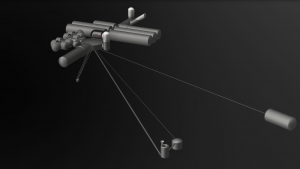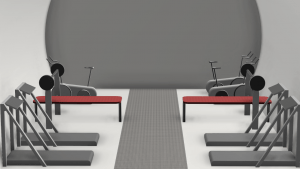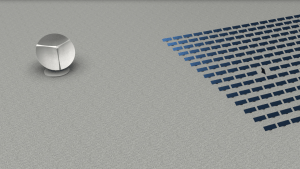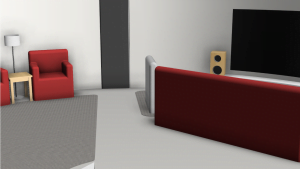Moon Camp Pioneers Gallery 2019-2020
In Moon Camp Pioneers each team’s mission is to 3D design a complete Moon Camp using Fusion 360. They also have to explain how they will use local resources, protect astronauts from the dangerous of space and describe the living and working facilities.
Team: Serenity
CTM – Centrum pro Talentovanou Mladez Prague Czech Republic 15 to 16 years old
External viewer for 3d project
|
Project description
[42] |
|||
|
Describe your Moon Camp project.
Moon base Serenity is a project to design a self-sustainable Moon Camp that would facilitate up to 10 astronauts. Each of them would spend approximately 6 months on the Moon, rotating in groups of five. They would conduct various experiments which would help propel humanity´s technological advancement and enhance our understanding of living on the Moon. It would also serve (combined with Gateway or other such space station) as a base for further missions to the Moon, Mars and beyond. I am well aware that it is a monumental, even monstrous project, but being modular and enabling further expansion by adding other modules, we think that it would be well worth it in the long run. Where do you want to build your Moon Camp?
The site of the Moon Camp was chosen carefully. It had to be a flat-enough ground to even facilitate the construction of such a large project, and it had to have water in some form. For those reasons, I chose the Shackleton crater, which is situated on the South lunar pole. The crater fits both criteria stated well, as the floor of it is theorized to be covered in water ice. Other than that, the depth of the crater offers some protection from asteroids and other space debris from some angles. However, positioning the base in a crater also has its disadvantages, to which I will say more in the Power part. How do you plan to build your Moon Camp? Describe the techniques and materials you would use.
As stated, Moon base Serenity is a rather monumental project, which means the construction will be a complicated task. However, the technologies available to us make it simpler than ever before. Most of the components of the base would be inflatable (excluding the interior furniture, which would be flat packed on the floor of each component). The standardized connectors for all parts make manufacturing and later completion simpler. Firstly, two worker robots would be sent to Luna to dig “trenches” in which they would lower the components afterwards. Those would be inflated by the pressure of air, which would be pumped in between the shells of the components. The components would be connected by the standardized connectors and after their inflation, the robots would “bury” them with leftover soil from the digging. |
|||
|
Water
|
Food
|
Electricity
|
Air
|
|
Water would be dug by the worker robots from the surface of the lunar crater in the form of ice. It would then be melted in the water generator (basically a heated coil) and sent by a pipe to the central hub, from which it would be distributed in the other modules via a network of pipes in the floor. |
Most of the food consumed in the Moon Camp would be self-grown in two large hydroponics modules. That would mean that astronauts would have access to fresh-grown crops like tomatoes and other vegetables/fruit. However, some ingredients needed to sustain a healthy lifestyle (like meat) would still have to be transported from Earth, like to the ISS, due to the immense costs of manufacturing them on the Moon, which outweigh the transportation costs. That would mean dehydrated food, spices etc. |
Concerning electricity, the Camp Moon follows the rule “redundancy, redundancy, redundancy”. The primary source of power would be four radioisotope thermoelectric generators running on 238Pu. In case of failure, there is a solar panel network situated beyond the upper lip of the crater (because of the need for sunlight). All the panels can be turned to be more efficient. However, in case both the RTGs and solar panels fail, there is a battery bank which can provide enough electricity for the base to be safely repaired. |
The air in the base would be filtered by a set of carbon dioxide filters in the central venting system. Additionally, new oxygen would be supplied by electrolyzing the water melted from lunar ice. The excess hydrogen could be used to refill any vehicle that lands on the base´s landing pad. In case of the filters failing, used air could be systematically vented out and replaced with new oxygen to give the astronauts time to repair the filtration system. This air would also be used to initially inflate the modules. |
|
How do you plan to build your Moon Camp? Which materials would you use?
[54] |
|||
|
The environment on the Moon is very dangerous for the astronauts. Explain how your Moon Camp will protect them.
Firstly, the base is placed in a deep crater, which means that it´s protected from asteroids and other space debris from some angles (from the sides etc.) However, to provide adequate protection against both asteroids and radiation, most of the base (excluding the observation deck, exit elevator and stairs) is “buried” under at least a meter of lunar regolith. Other than that, there is a layer of water between the modules´ inflatable shells which provides additional protection. Two factors combined provide the astronauts with a very good protection from both asteroids and radiation. However, there still is the risk of sudden rapid decompression. To counteract this problem, each module can be sealed immediately. It can be later pulled out by the worker robots and joined with the exterior elevator to evacuate the crew that might be trapped in the module to the rest of the base. |
|||
|
Describe a day on the Moon for your Moon Camp astronaut crew.
They wake up at about 8am in the morning. They have the time to take a shower and do other personal hygiene in the showers and the bathroom. After that, they might choose to go to the kitchen and prepare a delicious breakfast from their own self-grown crops and additional supplies from Earth. After breakfast, they would usually have a meeting. It should be rather informal to keep stress in the crew down. The base commander would ask the crew if they encountered any problems. They would lay out the plan for the rest of the day and assign each crew member their task for the day. The task given would vary based on the specialization of each individual crew member. For example, an engineering specialist would be assigned a routine check-up on the base´s systems, the solar panels etc. On the other hand, a botanist might plan a check-up on the crops growing in the hydroponics section and do some experiments with them. They would be usually assigned 6-8-hour shifts, depending on the nature of their work. At about 2pm, they would have lunch again consisting of their own crops and some supplies from Earth, like dried beef for example. After lunch, they would go back to their work and finish their shift. Throughout the day, they could go grab a quick snack from the refrigerator or make a cup of delicious hot coffee to help them concentrate. After their work is done, they would be able to either go back to their cubicle and spend their free time on their own (watching videos or reading e-books for example), or spend the rest of the day together in the common area in the hub and/or in the observation deck, which provides them with a beautiful scenery of the stars. They would have their evening meal at about 8pm. It could be the same as lunch or something different. When they finish their evening meal, they might be together for some more time or go to their cubicles. The time when they go to sleep would be on their own discretion, provided that their don’t productivity doesn´t suffer from sleep deprivation. |
|||













